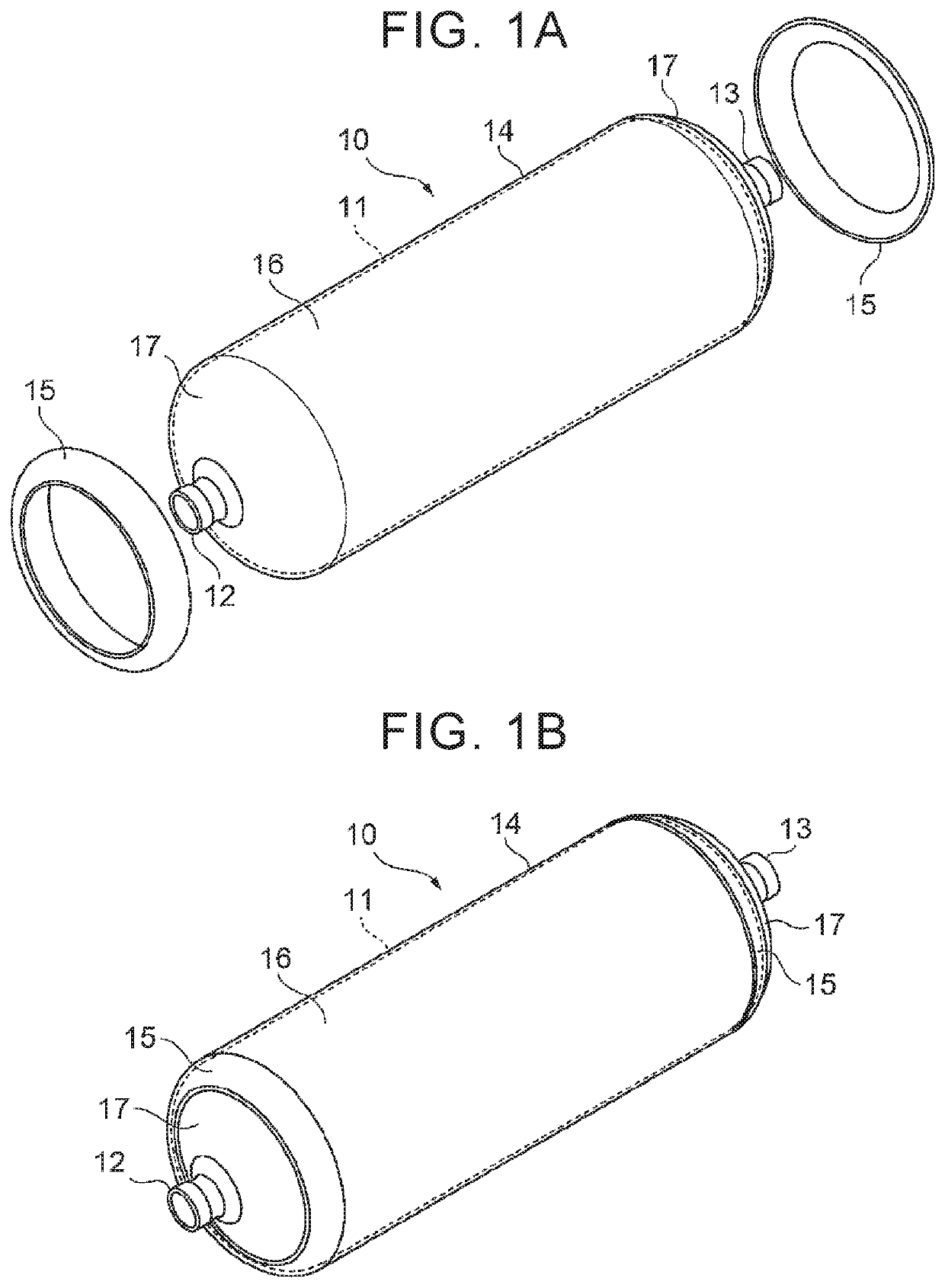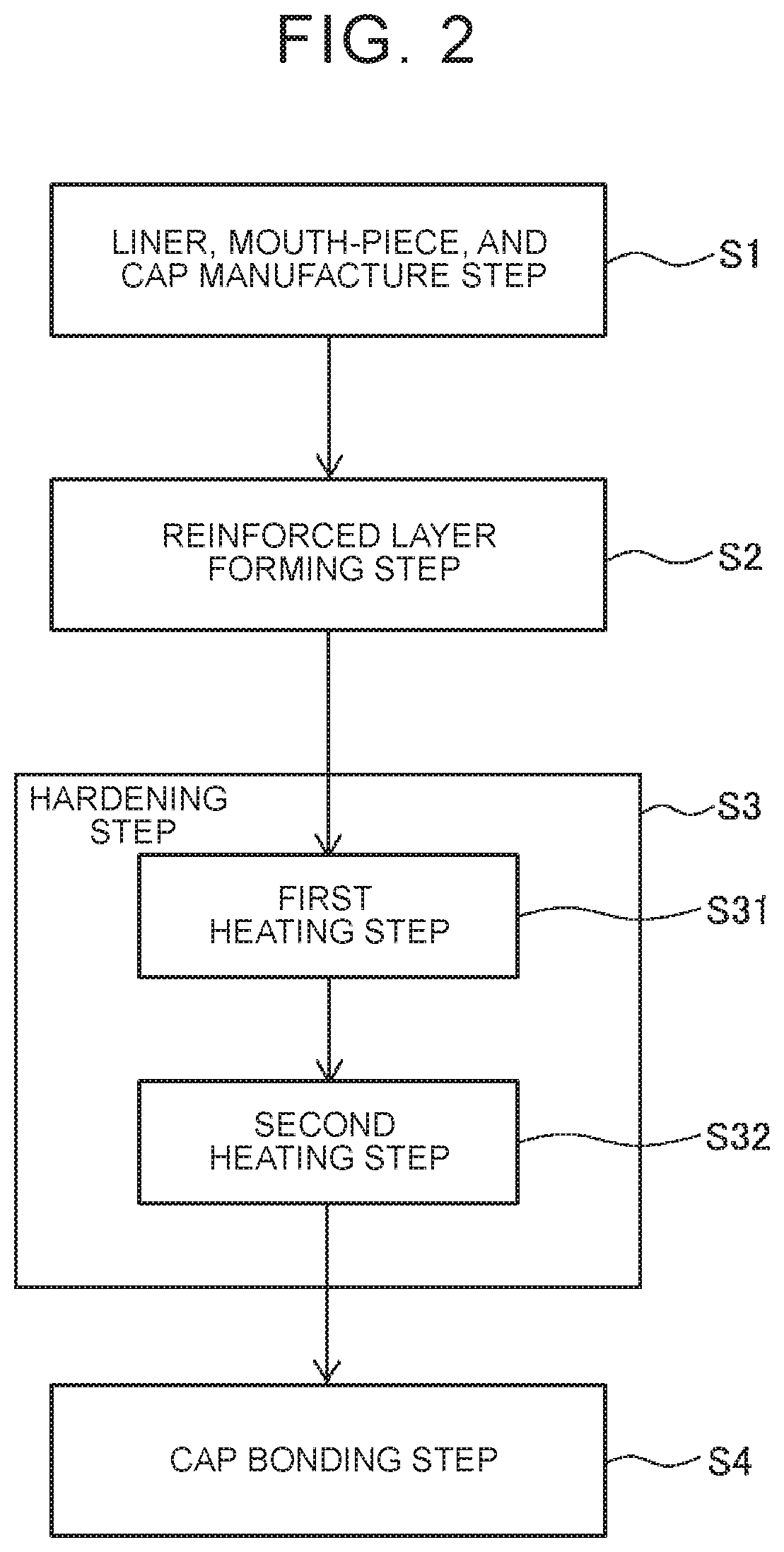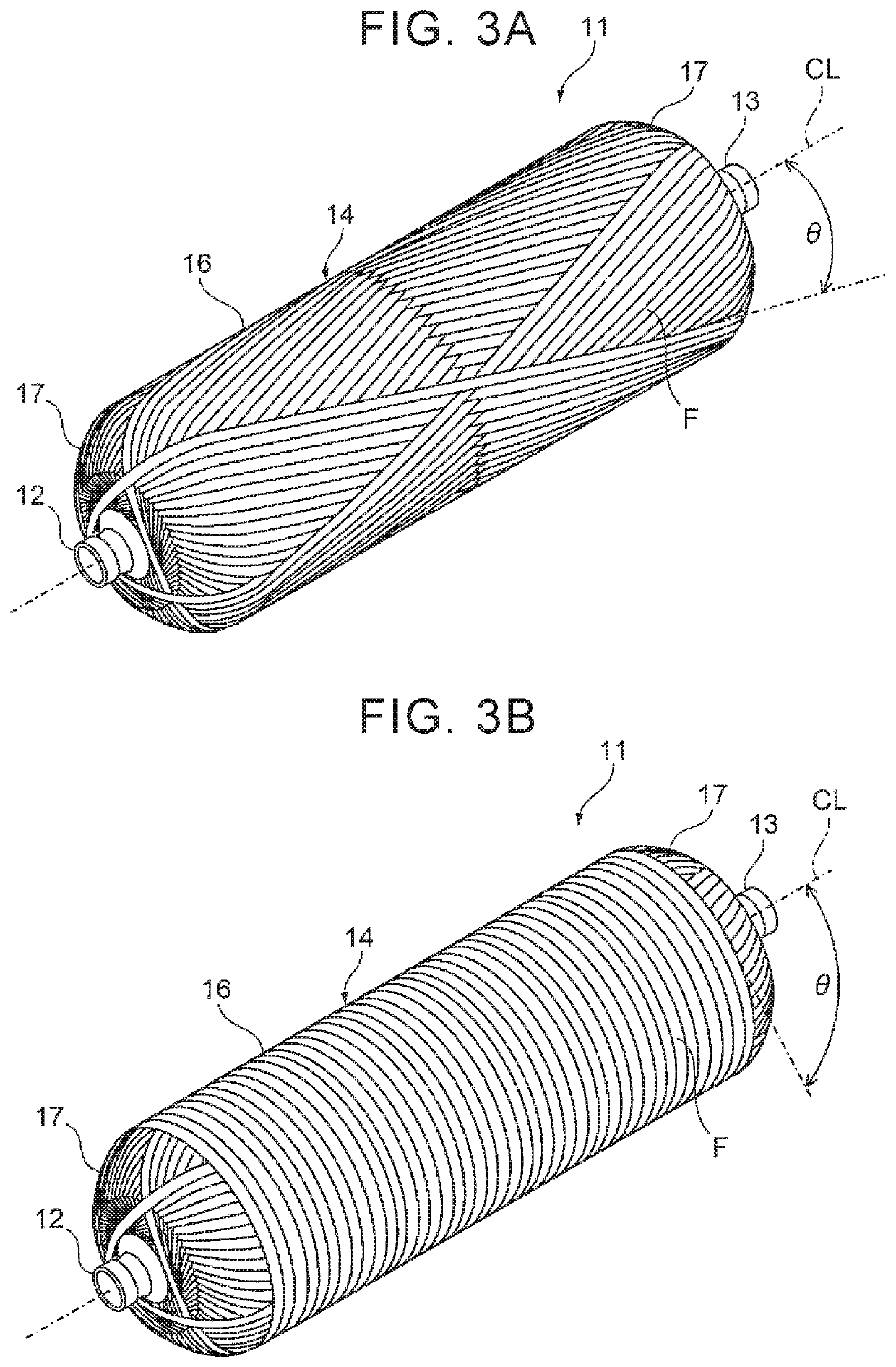Manufacturing method for tank
a tank and manufacturing method technology, applied in the field of tank manufacturing methods, can solve the problems of voids inside the fiber reinforced resin layer, poor appearance, and decrease in quality, and achieve the effects of reducing quality, reducing appearance, and facilitating heating
- Summary
- Abstract
- Description
- Claims
- Application Information
AI Technical Summary
Benefits of technology
Problems solved by technology
Method used
Image
Examples
Embodiment Construction
[0023]With reference to drawings, the following describes a manufacturing method for a high-pressure tank 10 according to an embodiment of the present disclosure. Note that the high-pressure tank 10 is one example of a “tank” in the present disclosure.
[0024]First described is the configuration of the high-pressure tank 10. As illustrated in FIGS. 1A, 1B, the high-pressure tank 10 is constituted by a liner 11, mouth pieces 12, 13, a reinforced layer (fiber reinforced resin layer) 14 formed on an outer peripheral surface of the liner 11, and a pair of caps 15. The high-pressure tank 10 has such a property that gas hardly passes through the high-pressure tank 10, i.e., a so-called gas barrier property, and is configured such that relatively high-pressure gas such as hydrogen is to be filled inside the high-pressure tank 10.
[0025]The liner 11 is constituted by a tubular hollow container and made of resin having a gas barrier property. A resin material of the liner 11 can be, for example...
PUM
| Property | Measurement | Unit |
|---|---|---|
| angle | aaaaa | aaaaa |
| angle | aaaaa | aaaaa |
| frequency | aaaaa | aaaaa |
Abstract
Description
Claims
Application Information
 Login to View More
Login to View More - R&D
- Intellectual Property
- Life Sciences
- Materials
- Tech Scout
- Unparalleled Data Quality
- Higher Quality Content
- 60% Fewer Hallucinations
Browse by: Latest US Patents, China's latest patents, Technical Efficacy Thesaurus, Application Domain, Technology Topic, Popular Technical Reports.
© 2025 PatSnap. All rights reserved.Legal|Privacy policy|Modern Slavery Act Transparency Statement|Sitemap|About US| Contact US: help@patsnap.com



